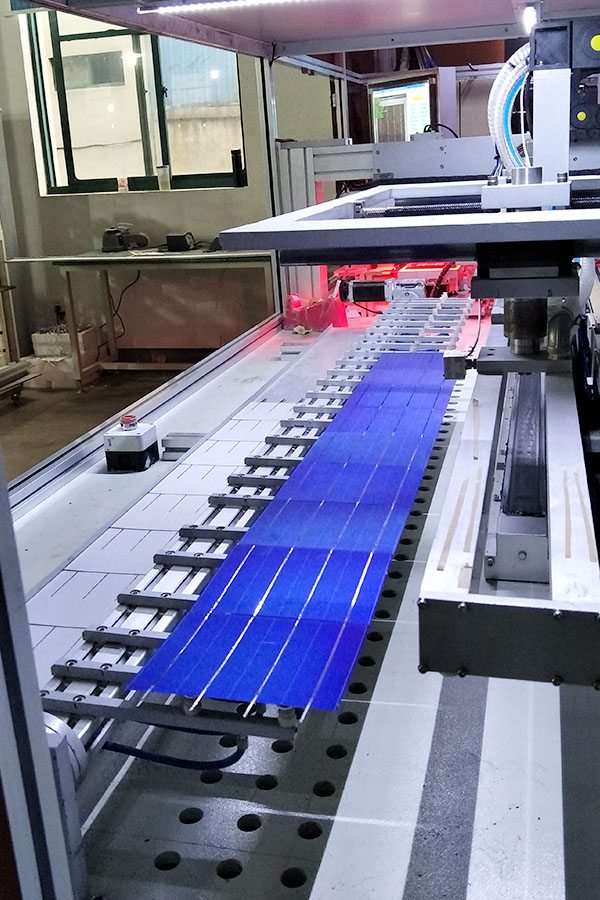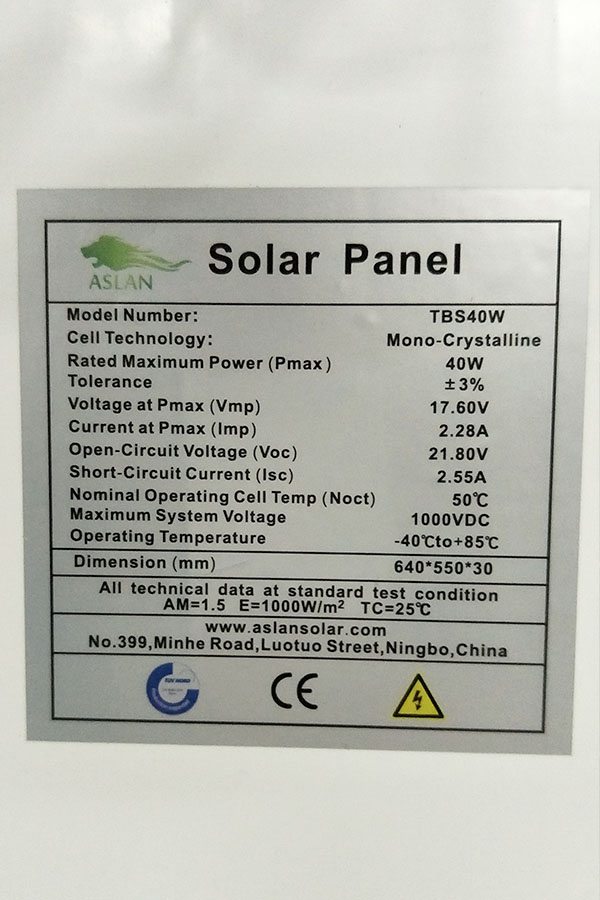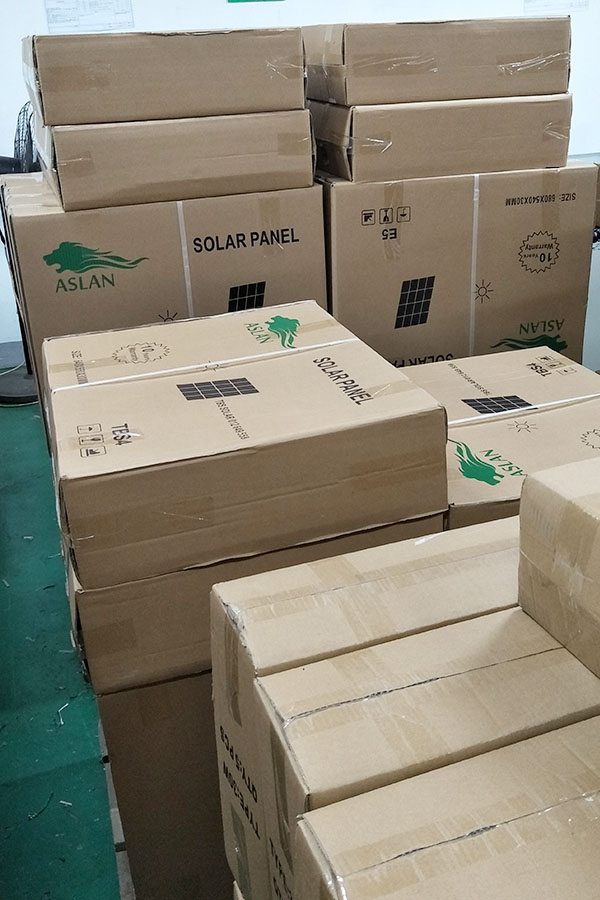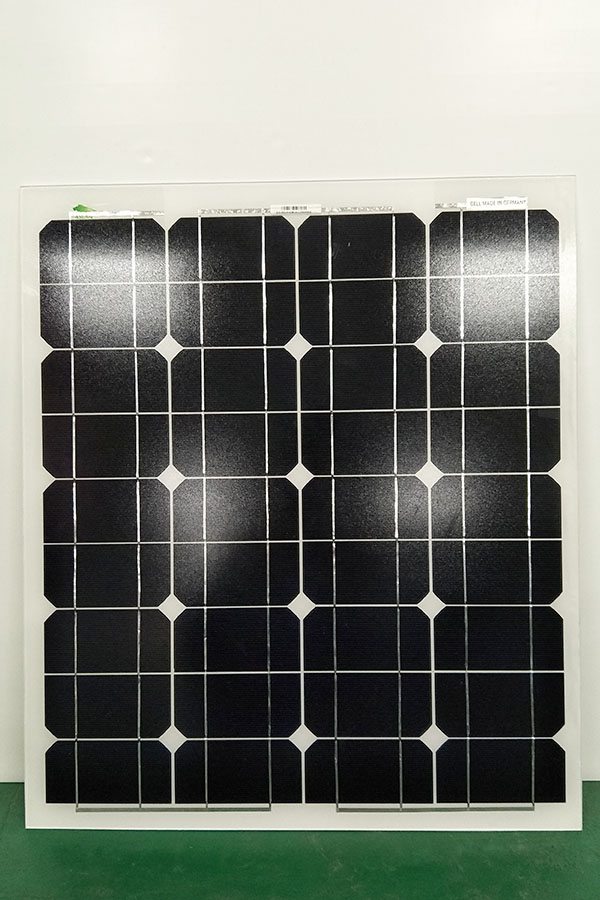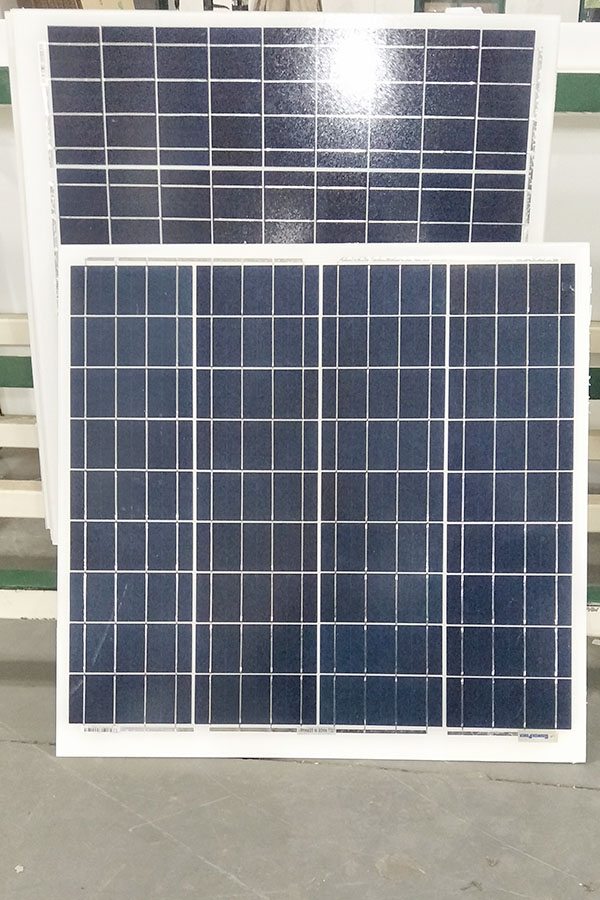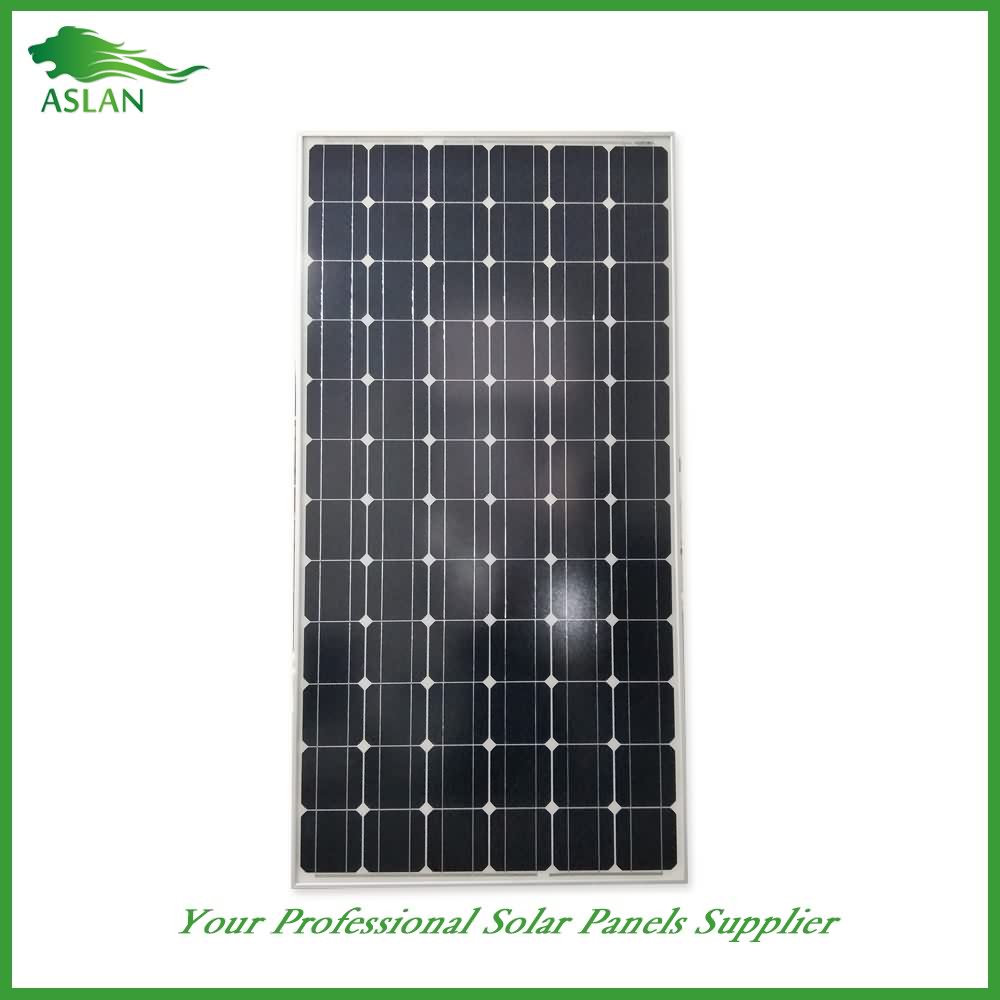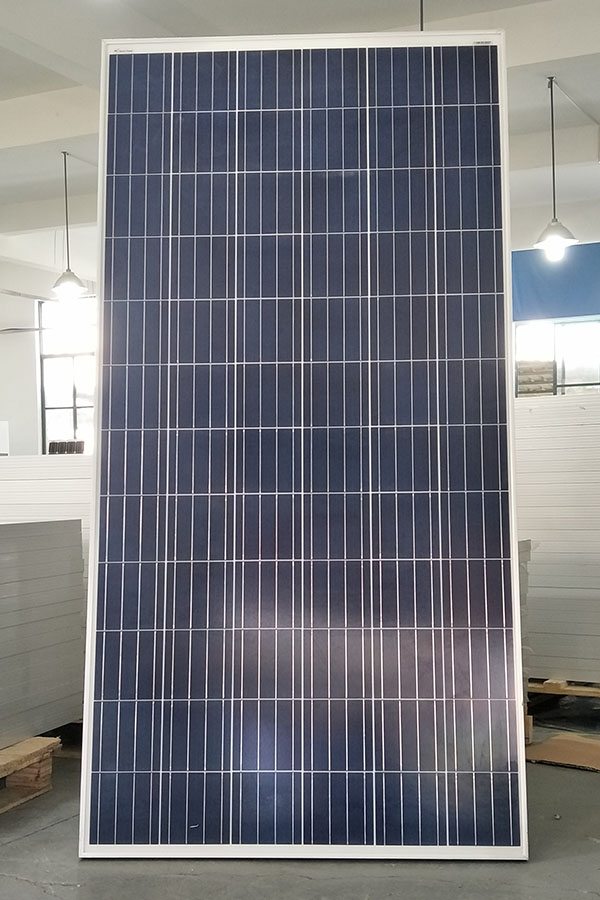Bottom price for Poly-crystalline Solar Panel 40W Wholesale to Belarus
Short Description:
We take "customer-friendly, quality-oriented, integrative, innovative" as objectives. "Truth and honesty" is our management ideal for Bottom price for Poly-crystalline Solar Panel 40W Wholesale to Belarus, Our professional technical team will be wholeheartedly at your service. We sincerely welcome you to visit our website and company and send us your inquiry.
Poly-crystalline Solar Panel 40W
Technical parameter
Maximum Power(W) 40W
Optimum Power Voltage(Vmp) 17.35V
Optimum Operating Current(Imp) 2.31A
Open Circuit Voltage(Voc) 21.16V
Short Circuit Current(Isc) 2.53A
Mechanical Characteristics
Cell Type Polycrystalline 156 x 52mm
No of Cell 36 (4x9pcs)
Dimensions 670x420x30mm
Weight 4.0Kg
Front Glass 3.5mm,High Transmission, Low Iron,Tempered Glass
Junction box IP65 Rated
Output Cable TUV 1×4.0mm2/UL12AWG,Length:900mm
Temperature and Coefficients
Operating Temperature(°C): -40°C ~ + 85°C
Maximum System Voltage: 600V(UL)/1000V(IEC) DC
Maximum Rated Current Series: 15A
Temperature Coefficients of Pmax: -0.47%
Temperature Coefficients of Voc: -0.389%
Temperature Coefficients of Isc: 0.057%
Nominal Operationg Cell Temperature (NOCT): 47+/-2°C
Materials of solar panel
1).Solar Cell——Polycrystalline solar cell 156*52mm
2).Front Glass——-3.2mm, high transmission, low iron, tempered glass
3).EVA——-excellent anti-aging EVA
4).TPT——-TPT hot seal made of flame resistance
5).Frame——anodized aluminum profile
6).Junction Box——-IP65 rated, high quality, with diode protection
Superiority: high quality anodized aluminum frame, high efficiency long life, easy installation, strong wind resistance, strong hail resistance.
Features
1. High cell efficiency with quality silicon materials for long term output stability
2. Strictly quality control ensure the stability and reliability, totally 23 QC procedures
3. High transmittance low iron tempered glass with enhanced stiffness and impact resistance
4. Both Poly-crystalline and Mono-crystalline
5. Excellent performance in harsh weather
6. Outstanding electrical performance under high temperature and low irradiance
Quality assurance testing
Thermal cycling test
Thermal shock test
Thermal/Freezing and high humidity cycling test
Electrical isolation test
Hail impact test
Mechanical, wind and twist loading test
Salt mist test
Light and water-exposure test
Moist carbon dioxide/sulphur dioxide
Solar Power VIC – http://solarpowervic.com.au/ furnishes prospective solar panel buyers with valuable information to assist them cut an unbeatable deal, identify the right resources, make sure to get the maximum rebate, and facilitates a personal call with a local expert free.
We do that by providing a short Solar Panels Report which includes insider information, the most powerful and valuable being the combination of really tough questions to ask any solar panels representative you might be negotiating with. You will be assured, develop confidence and level the playing field and ensure that you achieve the very best possible deal.
Government solar support methods are constantly changing. Rebates, become grants, then incentives by way of Renewable Energy Certificates or RECs. When considering to invest in solar panels it is critically important that you maximize these benefits because your investment in solar equipment will be a long term one and the implications will live with your home or business property/premises for many years. So you will want to explore your situation in detail with a local expert before making any commitments. That is just one of the benefits we bring to solar panel buyers.
Be sure to plan your solar PV installation carefully and it will serve you well and save you energy costs that understand the Grid and how you can feed it. You must also do your sums – but there is no need to be concerned because that is precisely why we will recommend a local expert who is current with all the latest rules and regulations to help you through the process.
UNSW School of Photovoltaic and Renewable Energy Engineering
Advanced optoelectronic tools to interrogate solution-processed solar cells
Andrew Telford
Imperial College London
To view complete with slides:
http://www2.pv.unsw.edu.au/videos/Andrew-Telford-24February2017/
To view additional seminars:
https://www.engineering.unsw.edu.au/energy-engineering/public-research-seminars
Homepage: http://www.pv.unsw.edu.au
ABSTRACT:
Organic and hybrid organic-inorganic thin films are attracting increasing attention due to their great potential for applications in a range of optoelectronic devices, such as solar cells and light-emitting diodes (LEDs). The ability to prepare films from solution, and at relatively low temperatures, allows the fabrication of devices that can be flexible, semi-transparent and light-weight. These properties can enable the integration of solar cells and LEDs in buildings, cars, clothing and more, as well as the development of foldable electronics.
In this talk, I will discuss the use of advanced optoelectronic techniques in understanding some major challenges in the development of two main types of solution-processed systems: polymer:fullerene bulk heterojunction solar cells and hybrid organic lead-halide perovskite solar cells. Firstly, I will introduce a new technique based on transient photovoltage spectroscopy, and show how we used it to shed light on the mechanism of current-voltage hysteresis in methylammonium lead iodide perovskite solar cells. Specifically, why hysteresis is so dependent on device structure. Secondly, I will discuss the combination of electroluminescence, transient photovoltage spectroscopy, sub-band-gap external quantum efficiency and space-charge-limited-current measurements to identify the formation of electron trap states in PCDTBT:PCBM solar cells. This study points at the fullerene as the weak link in the photo-degradation of polymer:fullerene devices, offering a guideline for the development of more stable solar cells.
SHORT BIOGRAPHY:
Dr Andrew Telford is a materials chemist with solid experience in the design and fabrication of polymeric and inorganic micro- and nano-architectures. He is currently a Junior Research Fellow at the Department of Physics, Imperial College London. Andrew completed his B.Sc. (Chemistry) at the University of Siena (Italy) in 2004, and his M.Sc. (Environmental and Cultural Heritage Chemistry) at the University of Florence (Italy) in 2007. He obtained his PhD in Science (Chemistry) from the University of Sydney (Australia) in 2012. His PhD research focussed on the modification of solid thin films to produce coatings with tailored properties. Specifically, bio-compatible coatings for the integration of biological and non-biological materials (e.g. for medical implants) and water-repellent paints.
The skills he acquired on the fabrication and characterisation of complex thin films were instrumental in approaching the field of renewable energy technologies. His current work at Imperial College London focuses on the development of new thin-film solar cells and light-emitting devices, primarily processed from solution. His work also involves the development of advanced optoelectronic probes to study solution-processed devices.

